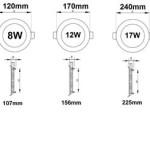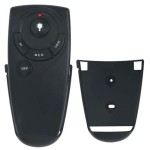Essential Aspects of Ceiling Light Bulbs Keep Blowing
Flickering lights and frequently blown ceiling light bulbs can be frustrating and a nuisance. Understanding the underlying causes behind this issue can help you resolve it effectively and prevent future occurrences. This comprehensive guide will delve into the essential aspects of why ceiling light bulbs keep blowing, providing insights into common culprits and practical solutions.
Electrical Issues
Electrical problems can be a major cause of blown light bulbs. Faulty wiring, loose connections, or a faulty light fixture can cause power surges or fluctuations that damage the filament inside the bulb. It's crucial to have any electrical issues inspected and repaired by a qualified electrician to ensure safety and prevent further damage.
Overvoltage
High voltage can put excessive strain on light bulbs, causing them to burn out prematurely. Overvoltage can occur due to several factors, including faulty voltage regulators or electrical appliances drawing too much power. Using a voltage meter to check the voltage at the light fixture can help determine if overvoltage is an issue. If necessary, a voltage regulator can be installed to stabilize the voltage supply.
Loose Bulb
A loose bulb can cause the filament to come into contact with the metal base of the light fixture, creating a short circuit and blowing the bulb. Ensure the bulb is screwed in tightly to prevent this issue. If the bulb continues to loosen, the light fixture may need to be inspected for any damage or worn-out components.
Incompatible Bulb
Using a bulb with incorrect wattage or voltage rating for the light fixture can lead to overheating and blown bulbs. Always refer to the manufacturer's specifications to determine the appropriate bulb type and wattage for your light fixture. Exceeding the recommended wattage can damage the fixture and pose a safety hazard.
Bulb Type
Different types of light bulbs have varying lifespans and susceptibility to blowing. Incandescent bulbs have a relatively short lifespan and are more prone to blowing compared to LED or CFL bulbs. Consider switching to more energy-efficient and longer-lasting bulb types to reduce the frequency of blown bulbs.
Vibrations
Excessive vibrations can cause the filament in the bulb to break, resulting in blown bulbs. This can occur due to nearby machinery, fans, or other sources of vibration. To mitigate this issue, ensure that the light fixture is securely mounted and minimize any potential sources of vibration in the vicinity.
Heat Buildup
Enclosed light fixtures can trap heat, causing the bulb to overheat and blow. Ensure the light fixture has adequate ventilation to allow heat to dissipate. Additionally, avoid using high-wattage bulbs in enclosed fixtures, as they generate more heat.
Conclusion
Understanding the reasons why ceiling light bulbs keep blowing empowers you to take effective measures to resolve the issue and prevent future occurrences. By addressing electrical problems, ensuring voltage stability, using compatible bulbs, and considering factors like bulb type, vibrations, and heat buildup, you can create a well-lit space without the frustration of frequently blown bulbs.

4 Reasons Why My Light Bulbs Keep Blowing Quick Spark

Three Reasons Why My Light Bulbs Keep Blowing At Home

Wondering Why Your Bulbs Keep Blowing Out Here S The Answer

Why Do My Light Bulbs Keep Blowing Service Today Blogs

6 Top Reasons Your Light Bulb Keeps Blowing

Why Do My Light Bulbs Keep Blowing Out Mister Sparky

How Do I Stop Light Bulbs From Blowing Unexpectedly Shockley Electric

Why Your Light Fixture Keeps Blowing Bulbs Electrical Tips

Why Do Your Light Bulbs Keep Blowing Tapps Electric

Why Do My Light Bulbs Keep Blowing Out Causes Fixes
Related Posts







